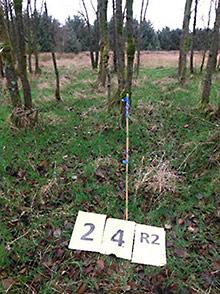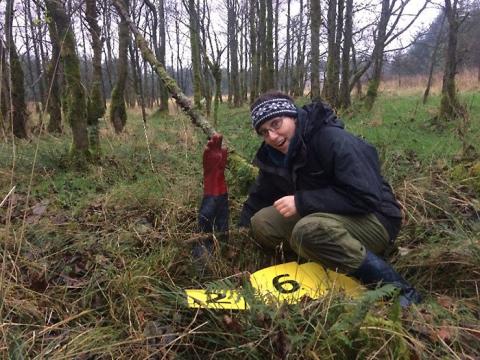Soils roughly store 1505 Petagrams of carbon globally, or 1,000,000,000,000 kilograms (Batjes, 2014)!
But soils are not all the same. Soils are of different origins, influenced by glaciers, weather and chemical reactions and plants.
And, on top of soil formation, human activity has the power to change soils: the way we humans use our land for timber production, growing food and grazing animals. Different land uses have been shown to affect soil differently. For example, the planting of forests on eroding slopes will reduce erosion of otherwise wind and weather-exposed bare soil.

Trees also allow for the establishment of specialised soil microbial communities, which in turn will mobilise and use soil nutrients. Tree roots distributed in the soil – the matrix – will explore new resources of water and nutrients for growth.
In contrast, grassland which is mainly used for grazing animals has its main impact on soil in the upper most soil layers, whereas most of the deeper soil stays unaffected.
SOC-D project
A new project called SOC-D (a component of the NERC-funded UK-SCAPE National Capability programme) has started, and will create an innovative model with the ability to describe Soil Organic Carbon (SOC) dynamics in the soil matrix. We are particularly interested in how SOC dynamics in the UK landscape change with soil depth under different land uses.
This year, we are focusing on forest and grassland sites that are next to each other but have the same underlying soil type. This will help us understand how forests and grasslands change SOC and related soil and plant parameters and processes.
Field sampling
After three months of sticking heads together, discussing ideas and a sampling strategy, our first field sampling campaign took place in Lancashire at the end of November 2018. A team of six people from CEH’s Bangor and Lancaster sites, came together to dig metre deep holes using a Cobra precision corer. It was our first attempt to collect as many cores as possible within three days. And, although we were challenged by cold temperatures as low as 2 degrees, short winter days and the first snow of the year, the soil was good to us (for non-field workers or soil scientists, this means that no stones jammed our equipment). It was a great team effort.

In the field: CEH scientists using a Cobra precision corer to dig metre deep holes for soil sampling.
After the (relatively) long days in the field, the samples were sorted and handed over to the laboratory team. The one-metre long cores are now being divided into sections and processed for analyses.
One lesson learned: a big pro for sampling in winter is that there was no need for keeping our soil samples cool; when left in the field or in the back of the car they froze solidly.

Many thanks go to the Forestry Commission for the very quick site access and sampling permission.
Our next update from the field will follow soon.